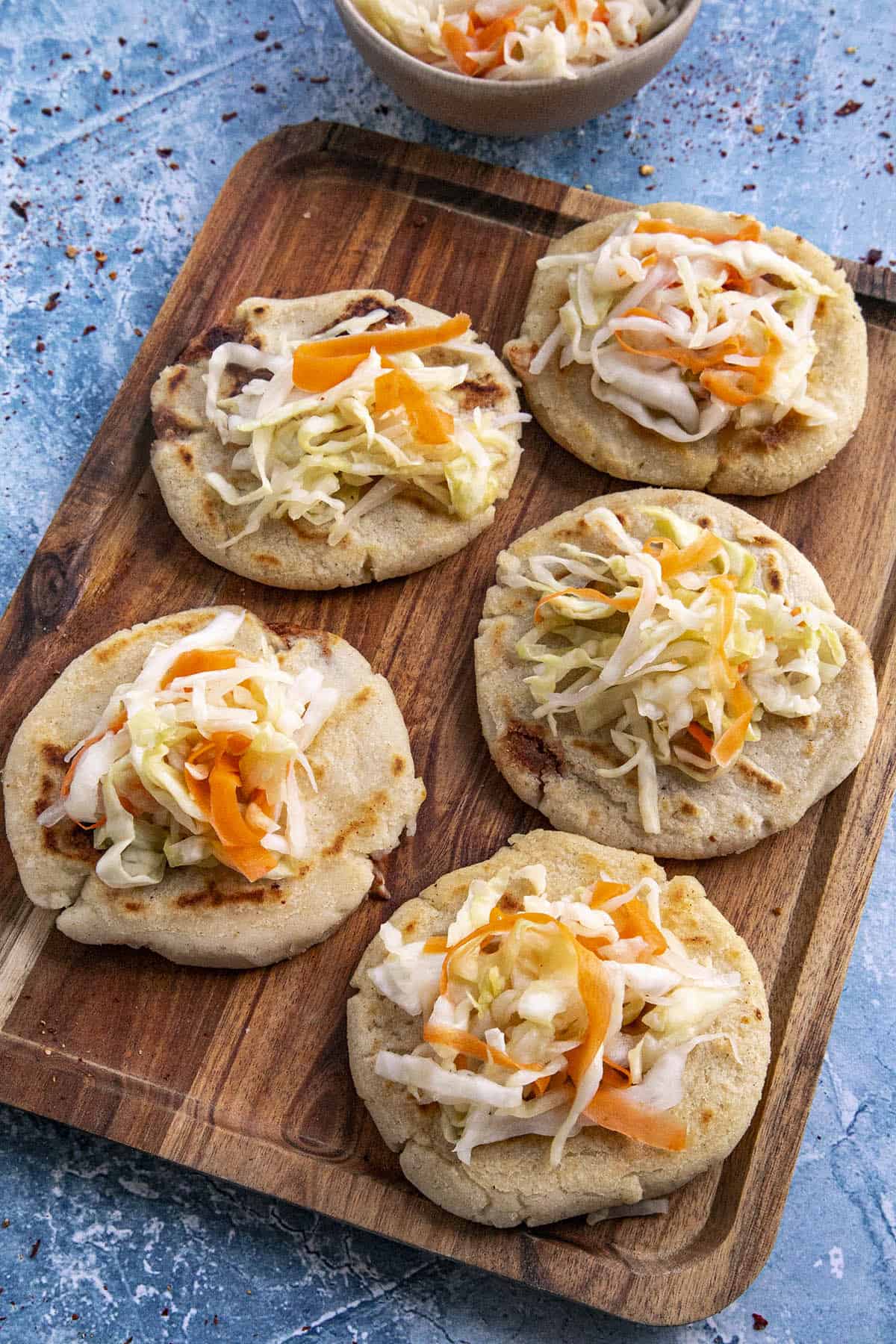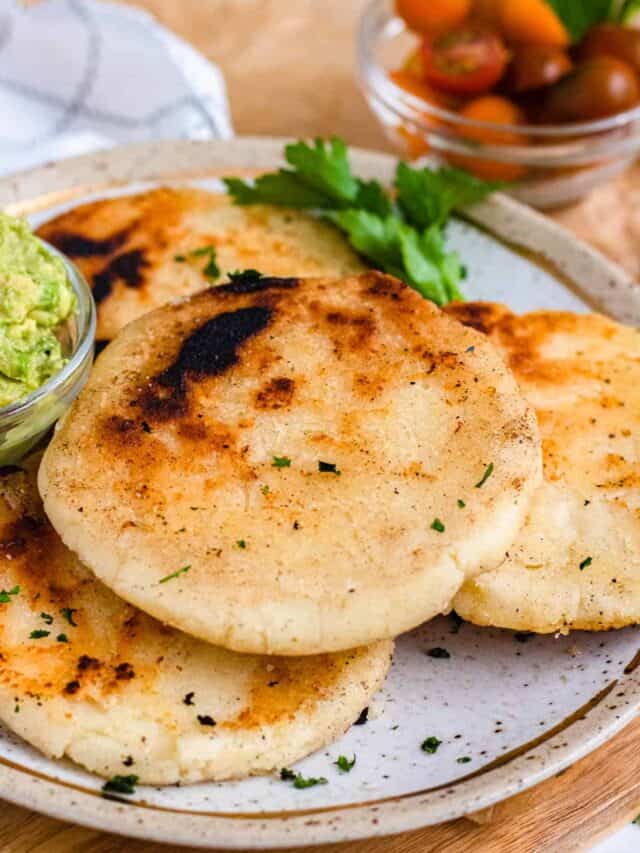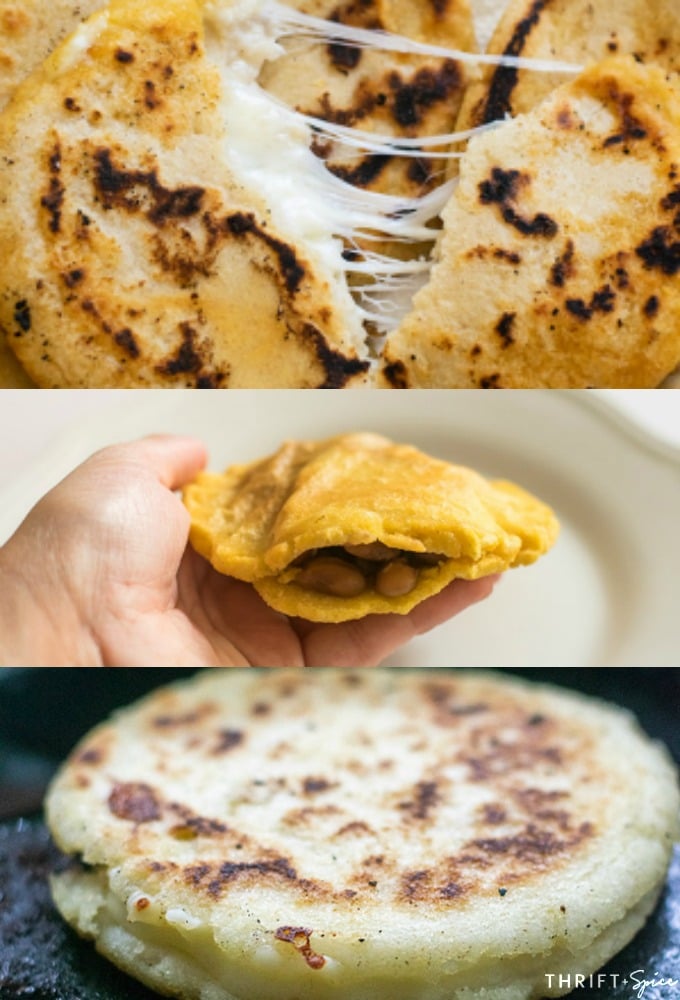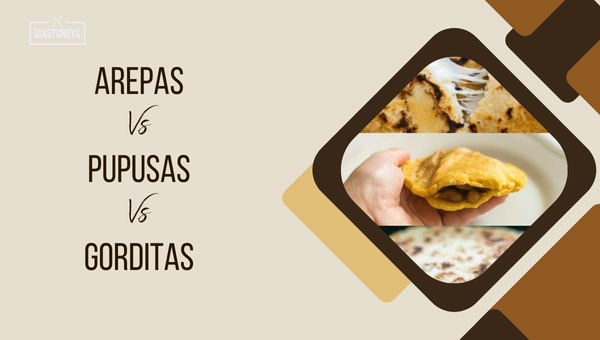Introduction To Pupusas And Arepas

Pupusas and arepas are both delicious Latin American corn cakes that have gained popularity worldwide. These traditional dishes are made from cornmeal dough that is cooked on a griddle, resulting in a crispy and golden outer layer. While both pupusas and arepas share a similar cooking technique, they differ in terms of origin, ingredients, and flavors. Pupusas are a beloved food in El Salvador, known for their thick and doughy texture, while arepas are commonly enjoyed in Colombia and Venezuela, offering a lighter and fluffier bite. Let’s explore the unique characteristics and cultural significance of these culinary delights.
Origin And Traditional Significance
The origin and traditional significance of pupusas and arepas can be traced back to the indigenous cultures of Latin America. Arepas have deep roots in the pre-Columbian era, where indigenous people in Colombia and Venezuela created these corn-based delicacies. They were an essential part of their daily diet and often served as a portable and nutritious meal.
On the other hand, pupusas have a strong connection to El Salvador’s culinary heritage. They have been enjoyed for centuries and are considered one of the national dishes of the country. Pupusas hold cultural significance and are often associated with festivities and celebrations, showcasing the rich traditions of Salvadoran cuisine.
Both pupusas and arepas continue to be beloved and cherished in their respective regions, representing the cultural identity and culinary heritage of Latin America.
Ingredients And Preparation Differences
When it comes to the ingredients and preparation of pupusas and arepas, there are distinct differences. Pupusas are made from masa harina, a traditional corn flour, mixed with water and sometimes a touch of oil. The dough is then formed into a thick disc and filled with various ingredients such as cheese, beans, or meat. Arepas, on the other hand, are made with pre-cooked cornmeal mixed with water, salt, and sometimes butter or oil. The dough is then formed into a round shape and cooked on a griddle or in an oven. The fillings for arepas are usually added after they are cooked and sliced open.
Pupusas: Salvadoran Corn Cakes

Pupusas are traditional corn cakes from El Salvador and are a beloved part of Salvadoran cuisine. They are made from masa harina, a traditional corn flour, mixed with water and sometimes a touch of oil. Pupusas are formed into a thick disc and filled with various ingredients such as cheese, beans, or meat. They are then cooked on a griddle until golden brown and crispy on the outside. Pupusas are typically served with curtido, a cabbage slaw, and tomato salsa. These delicious and versatile corn cakes are a staple in Salvadoran households and are enjoyed by people around the world.
Pupusas Ingredients And Fillings
Pupusas are made from masa harina, a traditional corn flour, mixed with water and sometimes a touch of oil. The dough is formed into a thick disc and filled with various ingredients such as cheese, beans, or meat. Some popular filling combinations include queso (cheese), frijoles (beans), and loroco (a native Central American flower bud). Pupusas can also be filled with chicharrón (pork), revueltas (a mixture of cheese, beans, and pork), or even shrimp. The filling options are endless, allowing for a variety of flavors and combinations to suit individual preferences.
Pupusas Cooking Methods And Presentation
Pupusas are cooked on a flat griddle or comal until they are golden brown and slightly crispy on the outside. The cooking process involves pressing the filled masa discs, flattening them with a tortilla press, and then placing them on the hot griddle. They are cooked for a few minutes on each side, flipping them once, until they are cooked through.
Once cooked, pupusas are traditionally served on a plate lined with a banana leaf for added flavor and presentation. They are typically garnished with a side of curtido, a pickled cabbage slaw, and a tomato salsa. Pupusas are enjoyed hot and are best eaten right away to fully appreciate their delicious flavors and textures.
Arepas: Venezuelan And Colombian Corn Cakes

Arepas are traditional corn cakes that are popular in both Venezuelan and Colombian cuisine. They are made from a dough consisting of masa harina (precooked cornmeal), water, and salt. The dough is shaped into a patty and cooked on a griddle or fried until it forms a crispy exterior with a soft and moist interior. Arepas are incredibly versatile and can be enjoyed plain or filled with a variety of ingredients such as cheese, meat, beans, and avocado. In Venezuela, arepas are typically split and filled, while in Colombia, they are often served whole with toppings or as a side dish. Arepas are a beloved staple in both countries and are enjoyed for breakfast, lunch, or dinner.
Arepas Variations And Regional Specialties
Arepas, popular in both Venezuela and Colombia, have a rich variety of regional specialties and variations. In Venezuela, the most common variation is the “Reina Pepiada,” which is filled with a combination of shredded chicken, avocado, mayonnaise, and herbs. Another popular variant is the “Dominó,” filled with black beans and white cheese. In Colombia, the “Arepas Paisas” are thicker and smaller, usually topped with butter and served with cheese or a slice of pork. The coastal region of Colombia is known for its “Arepa de Huevo,” a deep-fried arepa filled with a whole egg. Arepas’ versatility allows for endless combinations and unique flavors across these two countries.
Arepas Accompaniments And Flavors
Arepas are often enjoyed with a variety of accompaniments and fillings, adding to their delicious flavors. Common accompaniments include guacamole, salsa, or chimichurri sauce, which provide a tangy and refreshing contrast to the corn cake. Arepas can also be filled with a wide range of ingredients, such as shredded beef, pork, or chicken, along with cheese, beans, or avocado. These fillings add richness and depth of flavor to the arepas. Some regional specialties include adding fried plantains, scrambled eggs, or even seafood fillings. The versatility of arepas allows for endless combinations and a delightful experience for the taste buds.
Taste And Texture Comparison

When comparing the taste and texture of pupusas and arepas, notable differences emerge. Pupusas have a thicker and denser texture due to the use of a thicker corn dough. This results in a chewier bite and a slightly doughy mouthfeel. In terms of taste, pupusas offer a more complex flavor profile, with the tanginess of the curtido and the richness of the cheese and pork filling complementing the corn dough. Arepas, on the other hand, have a softer texture with a crisp outer shell and a moist, fluffy interior. They have a more subtle corn flavor that is further enhanced by the fillings, creating a savory and satisfying culinary experience.
Contrasting Flavors Of Pupusas And Arepas
Pupusas and arepas offer contrasting flavors that reflect their unique cultural identities. Pupusas, with their thick corn dough, have a rich and tangy taste. The combination of the slightly sour curtido (pickled cabbage) and the savory filling of cheese or pork creates a burst of flavors in every bite. Arepas, on the other hand, have a subtle corn flavor that is enhanced by the fillings such as shredded beef, cheese, or black beans. The fillings complement the mild sweetness of the corn dough, resulting in a more subdued and harmonious taste. These contrasting flavors make pupusas and arepas distinct and satisfying culinary experiences.
Textural Differences Between The Two Corn Cakes
The textural differences between pupusas and arepas are quite distinct. Pupusas, made from unprocessed cornmeal, have a slightly grainier texture. When cooked, they become soft and pillowy on the inside with a crispy outer layer. This contrast in textures creates a satisfying bite. Arepas, on the other hand, have a denser and more compact texture. The cornmeal dough is cooked until it forms a crisp and golden brown exterior, resulting in a firmer texture overall. This difference in texture adds to the unique experience of enjoying these Latin American corn cakes.
Cultural Significance

Pupusas and arepas hold great cultural significance in Latin American cuisine. These corn cakes are not only tasty dishes but also represent the rich culinary heritage of their respective regions. Pupusas are an integral part of Salvadoran cuisine, often enjoyed with family and friends during gatherings and celebrations. Arepas, on the other hand, hold a special place in Venezuelan and Colombian culture, with numerous regional variations and specialties. These dishes showcase the creativity and diversity of Latin American cooking, serving as symbols of national pride and identity. Celebrations and events featuring pupusas and arepas further highlight their cultural importance, bringing people together to honor their traditions and flavors.
Role Of Pupusas And Arepas In Latin American Cuisine
Pupusas and arepas play a significant role in Latin American cuisine, serving as beloved staples in many countries. Pupusas are a symbol of Salvadoran gastronomy and are deeply ingrained in the cultural identity of El Salvador. They are often enjoyed as a main course or street food, showcasing the country’s rich culinary heritage. Arepas, on the other hand, hold a special place in Venezuelan and Colombian cuisine. They are versatile and can be eaten at any meal, filled with a variety of delicious ingredients. Both pupusas and arepas are treasured for their flavors, versatility, and ability to bring people together to celebrate Latin American culinary traditions.
Celebrations And Events Featuring Pupusas And Arepas
Pupusas and arepas are often highlighted and celebrated in various cultural events and festivals throughout Latin America. In El Salvador, pupusas take center stage during the annual Pupusa Festival, where locals and tourists gather to indulge in a wide variety of pupusa flavors and enjoy live music and dance performances. In Venezuela and Colombia, arepas are celebrated during the Arepa Festival, where food vendors showcase their creativity by offering unique and delicious arepa fillings. These celebrations serve as a platform to honor and showcase the culinary traditions and cultural heritage associated with pupusas and arepas.
Conclusion

In conclusion, pupusas and arepas are two distinct corn cakes that have their own unique flavors, textures, and cultural significance in Latin American cuisine. Pupusas, originating from El Salvador, are filled with various ingredients and are typically enjoyed with a side of curtido and salsa. Arepas, on the other hand, are more like bread, with a wide variety of fillings and accompaniments depending on the region. Both pupusas and arepas reflect the rich culinary heritage of their respective countries and are celebrated in festivals and events. Whether you prefer the savory and tangy taste of pupusas or the versatile and comforting nature of arepas, these corn cakes offer a delicious cultural experience.
Nutritional Value And Versatility Of Pupusas And Arepas
Pupusas and arepas are not only delicious, but they also offer nutritional value and versatility as part of Latin American cuisine. Pupusas are typically filled with a variety of ingredients such as cheese, beans, and meats, providing a good source of protein and essential nutrients. Arepas, on the other hand, can be filled with an array of options, including cheese, avocado, or even shredded meat, offering a satisfying and balanced meal. Both corn cakes can be enjoyed as a snack, a main dish, or even as a breakfast option, showcasing their versatility in different culinary settings. Additionally, these corn cakes are often gluten-free and can be modified to suit dietary preferences or restrictions, making them a great choice for individuals with specific dietary needs.
Preference And Availability In Different Regions
Pupusas and arepas are beloved dishes in Latin America, but their popularity and availability can vary across different regions. In El Salvador, pupusas are a staple and can be found in every corner of the country. They are deeply ingrained in the culture and are enjoyed by locals and visitors alike. Arepas, on the other hand, are more commonly found in Venezuela and Colombia, where they are a dietary staple. However, with the increasing globalization of cuisine, both pupusas and arepas can now be found in various parts of the world, allowing people to experience the flavors of Latin America no matter where they are.
FAQ About Pupusas Vs Arepas: Comparing Latin American Corn Cakes
Q: What is a pupusa?
A: Pupusas are traditional Salvadoran thick corn tortillas stuffed with a variety of fillings like cheese, beans, and meat, then cooked on a griddle.
Q: What is an arepa?
A: Arepas are a staple in Colombian and Venezuelan cuisine, made from ground maize dough or cooked flour, which is then formed into a patty and grilled, baked, or fried.
Q: What are the main differences between pupusas and arepas?
A: Pupusas are thicker and stuffed with ingredients, while arepas are thinner, more like bread, and typically not filled with ingredients but served with various toppings.
Q: How are pupusas and arepas typically served?
A: Pupusas are commonly served with curtido (a pickled cabbage salad) and salsa roja, while arepas are eaten with cheese, butter, avocado, or other accompaniments.
Q: Are pupusas and arepas gluten-free?
A: Yes, both pupusas and arepas are naturally gluten-free since they are made from corn-based ingredients.
Q: Which countries are pupusas and arepas popular in?
A: Pupusas are popular in El Salvador, while arepas are popular in Colombia and Venezuela, though both are enjoyed across Latin America.

Marine Bay Restaurant received the International Food Culture Award 2019 as the Best Szechuan & Hunan Restaurant, enjoying a reputation in North America. Renowned for the tunnel, authentic, and cheap. Known as “Human Taste First Garden,” 2013 Vancouver culinary first book named “Best Chuan Xiang Outlets,” significant temperature and China Eastern Airlines designated outlets.